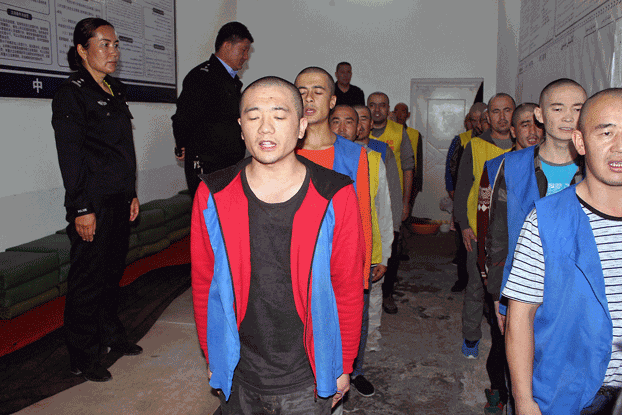Protesters involved in Vietnamese road riot claim police torture
A man detained for protesting the demolition of a road in Vietnam’s Nghe An province says he was tortured into confessing by police while another detainee claims he was also forced to sign a confession. They were among 10 people arrested as hundreds of police clashed with locals demonstrating against the destruction of an old road connecting their village to a main road. A local, who did not want to be named for safety reasons, told RFA that police at Nghi Loc district police headquarters handcuffed a 55-year-old prisoner to a chair and slapped him. “The investigator, who was a uniformed officer, put one foot on his thigh to scare him then slapped him on both ears. He still has tinnitus. He was also hit on the back of the head,” the local said. Later the same day the resident claims the prisoner was slapped by another policeman named Toan, but not hard enough to cause any injury. He said the arrested man was told by police “if you don’t tell the truth you will be killed.” They ordered him to confess to the crimes of “disturbing public order” and “resisting a law enforcement officer in performance of his/her official duties.” “He was forced to admit to causing disorder even though he said he didn’t cause trouble but was only seeking justice,” said the local. “They said he went to a crowded place [where people were] causing disorder. They forced him to confess.” “The policeman wrote the minutes himself, read them out and told him to sign. There were many passages he didn’t accept and crossed out but in the end he still had to sign.” A 50-year-old man, who has also been released, said he was also forced to confess and was charged with “disturbing public order” and “resisting public officials.” Of the 10 arrested protesters one woman who wasn’t a local was released the same night. Seven people are still in custody. Binh Thuan parish resident Nguyen Van Hien said that, as of this Monday, the families of those still being held had not been allowed to visit and had not received any documents from the police about the cases against their relatives. Hundreds of police and plain clothes officers were mobilized on the morning of July 13 to stop the protest, building barbed wire fences around the road, which is on land the government has handed over to a company to build an industrial zone. A new road has been built to replace the old one but locals said they are worried the company that owns the road may close it and force them to leave the area their families have occupied for generations. Protestors removed part of the fence to occupy the old road and clashed with riot police armed with batons and shields. Video of the scene shows police firing tear gas and smoke grenades to disperse the crowd, some of whom responded by throwing petrol bombs. State media say five police officers were injured. A 72-year-old woman was taken to hospital, but her family were not allowed to see her. The 55-year-old man said he heard about the clashes with police in the morning and went to the scene to calm people, urging them to protest peacefully. He said he left when police fired smoke grenades and tear gas and returned to his village. When police started searching the village he hid on the second floor of a partially built house. He said police spotted him, threw him to the floor, beat and handcuffed him, dragging him along the ground. He said the beating left him with a lump on his head, facial bruising and blood in his eyes. The Investigation Police Agency of Nghi Loc district said they are collecting documents and evidence and investigating acts of “disturbing public order,” actions “against law enforcement officers” and claims of “illegally arresting people,” in accordance with Vietnamese law.






